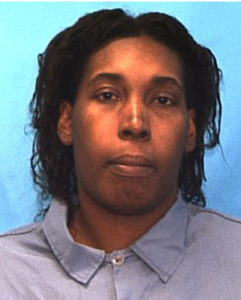
Latandra Ellington, 36, was in prison on tax charges and died last September under suspicious circumstances
In Florida last year, an inmate died in prison almost every day, an astonishing reality that has forced the Justice Department to investigate and state lawmakers to consider a corrections department overhaul.
The dubious record of 346 inmate deaths over a calendar year has, rightfully, sparked concern and raised questions about safety in prisons and the conduct of correction officers.
Black inmates make up about 32.5 percent of Florida’s prison population, but just 16 percent of its residents, according to the Florida Department of Corrections.
Prison officials claim most casualties were from natural causes, which would be a phenomenal coincidence, especially with the violent nature of prison life. But a series of suspicious deaths sounded the alarm.
The sheer number of deaths and the questionable circumstances sparked Greg Evers, a Republican in charge of the Florida Senate’s Criminal Justice Committee, to conduct unannounced, after-hour visits to prisons to determine the cause of so much loss of life.
Evers determined that change in the Department of Corrections was needed.
“We’ve got one-tenth-of-1 percent that still believe it’s ‘us against them,'” Evers says. “In other words, the correction officers against the inmates. And they try to rule with an iron hand.”
The family of Latandra Ellington, 36, certainly believes her death was not by natural causes, as an investigation claimed. Ellington was incarcerated for tax fraud at Lowell Correctional Institution in central Florida when she died. Her aunt, Algarene Jennings, says Latandra was murdered.
Jennings used a letter from her niece to illustrate why to NPR. “This is September 21 that she wrote this letter. She said, ‘Aunt Rene, how are you feeling today? I hope and pray, great.’ And she put a smiley face on it,” Ellington says.
Then she wrote that one of the prison guards was threatening to kill her. “He told me…he was going to beat me to death and mess me like a dog,” the letter said. “He was all in my face. Then he grabbed his radio and said he was going to bust me in my head with it.”
After receiving the letter, Jennings called the prison, and an official there promised to place Ellington under special protection. But by the next morning, she was dead. A state autopsy said the manner of death was “natural.” A toxicology report found elevated levels of hypertension medication.
Ellington’s family did not embrace that news and hired an independent coroner to offer a report. That autopsy found “hemorrhaging caused by blunt force trauma consistent with kicking or punches to the lower abdomen” Jennings said to NPR.
Also, when she saw her niece’s body, Jennings said there were other things that convinced her that Ellington had been beaten. She says, “Her right temple had a dent in it, a big bruise. Across her eye was a scar. But this was a fresh scar, you know, it had a scab over it.”
Still, a Florida Department of Law Enforcement investigation said it found no evidence Ellington had been beaten in a 78-page report. Ellington’s family plans to challenge those findings in court.
This case highlights the question of safety in Florida’s prisons, which was taken to task in a Miami Herald series. The stories documented a pattern of inhumane treatment, abuse and unexplained inmate deaths — and they prompted Florida’s legislature to take action.
Several prison guards at a Tallahassee hearing testified about the stressful conditions they work under. Officer Timothy Butler said staff shortages and a lack of communication with the administration have made the prisons unsafe for the inmates and the guards. “It’s to the point,” he said, “where that if I was to walk down on a compound, I feel scared … I don’t even know where we have enough people on there to help.”
Evers, who made the random checks, said, “It almost appears that there’s cover-up involved. It’s one thing to do it. If it was a mistake, it was a mistake. But it’s another thing to try to cover it up and it wasn’t a mistake.”
Julie Jones, the new corrections secretary, does not buy into the cover up theory. She said the “vast majority” of the 346 deaths in 2014 were from natural causes, something that should be expected in an aging inmate population. Of the 15 deaths determined to be homicides, she says, officers were involved in three.
“I think what we have is a group of disgruntled employees that do not have the best interests of the department at heart,” she insists, despite the record number of deaths, decrease in funding and officers’ claims. “If you drill in, the actual stats don’t portray it’s a crisis.”


